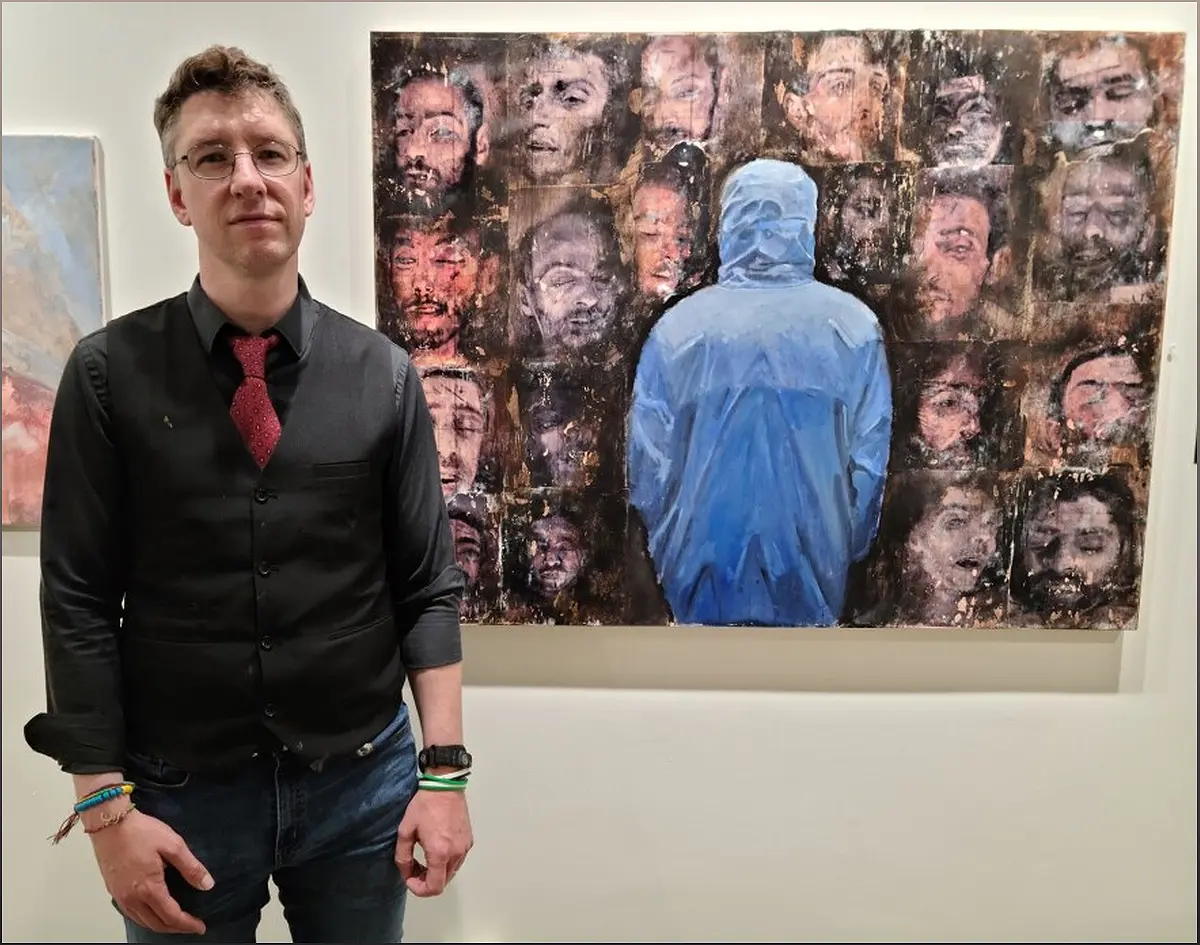The Western Illinois University Department of Art and Design is hosting a thought-provoking exhibit titled 'The Caesar Files: War Crimes in the Digital Age.' This captivating collection of paintings recreates photographs taken by an anonymous photographer known as Caesar, who risked his life to expose the atrocities committed by the Syrian government. Through this article, we will delve into the significance of this exhibit and the artist's unique approach to capturing the horrors of war crimes.
The Story Behind 'The Caesar Files'
Unveiling the courageous act of an anonymous photographer
The 'The Caesar Files: War Crimes in the Digital Age' exhibition at Western Illinois University showcases the remarkable story of an anonymous photographer known as Caesar. This brave individual risked their life to capture and smuggle out photographs depicting the horrifying crimes against humanity committed by the Syrian government.
Caesar's photographs provide a chilling glimpse into the atrocities that took place in Syrian prisons, shedding light on the harsh realities faced by countless men, women, and children. Through this exhibition, visitors have the opportunity to witness the power of art in raising awareness and inspiring change.
The Artistic Approach
Transforming digital images into powerful paintings
Artist Marc Nelson, the creative mind behind 'The Caesar Files' paintings, draws inspiration from the digital images that inundate our social media feeds. The exhibition's title, 'War Crimes in the Digital Age,' reflects the constant exposure to these crimes through online platforms.
Nelson's paintings, created using charcoal and slow-drying paint, offer a unique perspective on the war crimes. By transforming the digital images into tangible artworks, he invites viewers to engage with the subject matter on a deeper level. The deliberate process of art-making forces both the artist and the audience to confront the disturbing reality captured in each painting.
The Impact of Analog Art
Amplifying the message through tangible creations
Nelson's paintings have been widely used by news agencies, Amnesty International, and other organizations to illustrate the atrocities occurring in Syria. Their abstract nature allows these images to bypass censorship algorithms, ensuring their widespread dissemination.
By employing analog art as a medium, Nelson emphasizes the importance of engaging with the world through various forms of expression. He believes that artists have a responsibility to respond to the age they live in and contribute to the global conversation. Through 'The Caesar Files' exhibition, Nelson's art becomes a powerful tool for raising awareness and advocating for justice.
A Call to Action
Inspiring change through art and education
'The Caesar Files: War Crimes in the Digital Age' serves as a reminder that art can be a catalyst for change. Nelson, not only an artist but also an art educator, emphasizes the importance of teaching students about the Holocaust and other historical atrocities through various mediums, including graphic novels.
Through his work, Nelson encourages individuals to sit with the images of war crimes, rather than simply scrolling past them on social media. By provoking an emotional response and fostering a deeper understanding, he hopes to inspire action and promote a more compassionate world.
Conclusion
The 'The Caesar Files: War Crimes in the Digital Age' exhibition at Western Illinois University serves as a powerful testament to the enduring impact of art in raising awareness about war crimes. Through the paintings based on photographs smuggled out of Syria, visitors are confronted with the harsh realities faced by countless individuals. Artist Marc Nelson's unique approach sparks dialogue and inspires action, reminding us of the importance of art in shaping the world we live in.
FQA
What is the significance of 'The Caesar Files' exhibition?
The exhibition sheds light on war crimes by showcasing paintings based on photographs smuggled out of Syria, emphasizing the power of art in raising awareness and inspiring change.
Who is the artist behind 'The Caesar Files' paintings?
The artist is Marc Nelson, who draws inspiration from digital images and transforms them into tangible artworks, inviting viewers to engage with the subject matter on a deeper level.
How does analog art contribute to the exhibition's message?
Analog art, such as Nelson's paintings, plays a crucial role in bypassing censorship algorithms and amplifying the message of the exhibition, ensuring widespread dissemination and promoting a global conversation.
What is the call to action presented in the exhibition?
The exhibition encourages individuals to sit with the images of war crimes, fostering a deeper understanding and inspiring action towards a more compassionate world.

